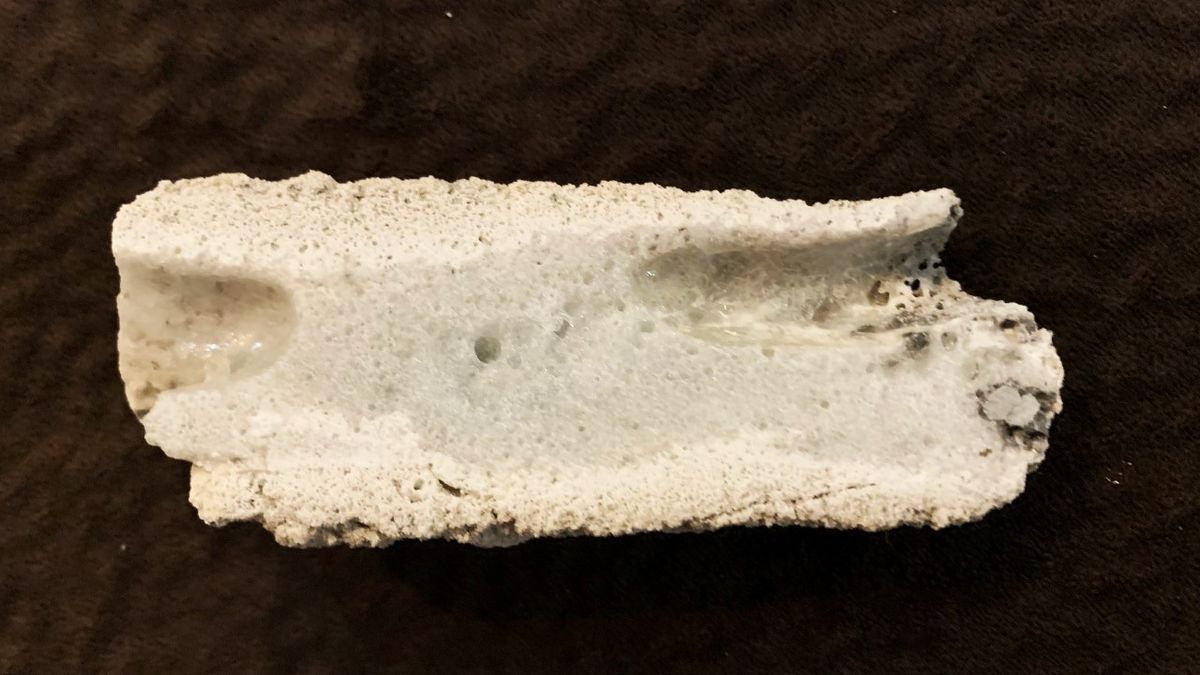Science
Related: About this forumRare, 'rule-breaking' quasicrystal found in chunk of 'fossilized' lightning
By Stephanie Pappas published about 17 hours ago
A type of crystal that breaks the rules of ordinary crystallography has been found in a tube of melted sand from Nebraska.

Fused sand from lightning or a downed power line, known as a fulgurite. This fulgurite, found in Nebraska, holds a rare material known as a quasicrystal. (Image credit: Luca Bindi)
A tube of "fossilized lightning" from Nebraska's Sandhills holds a rare type of quasicrystal that had previously only been found in meteorites and at atomic bomb test sites.
Quasicrystals are materials that break the traditional rules of crystallography. Before they were first reported in 1984, scientists thought materials could either be crystalline — with symmetrical, repeating patterns — or amorphous, meaning randomly arranged and disordered. In addition, scientists believed crystals could only be symmetrical a limited number of times when rotated around an axis — two, three, four or six times.
Quasicrystals break those rules. They're put together in an ordered pattern, but that pattern does repeat. They also have rotational symmetries that no ordinary crystal can achieve. A quasicrystal with icosahedral symmetry, for example, can display five-fold symmetry around six different lines of rotation.
Quasicrystals were first discovered in the laboratory. In 2012, however, Paul Steinhardt(opens in new tab), a theoretical physicist at Princeton University, and Luca Bindi, a geoscientist at the University of Florence in Italy, announced the discovery(opens in new tab) of a natural quasicrystal in a meteorite that fell on the Kamchatka Peninsula in northeastern Russia. The researchers then created more quasicrystals in the lab by mimicking the high temperatures and high pressures that might be found when rocky bodies collide. They then turned to another place where a very rapid transition to high temperature and high pressure occurred: the Trinity atomic bomb test site in New Mexico. There, they found more quasicrystals in minerals from beneath where the atomic bomb exploded.
More:
https://www.livescience.com/fulgurite-quasicrystal
2naSalit
(92,684 posts)That's something I hadn't known about. I spent a little time hanging out with "geoliwogs" and learned A bit about crystalline structure and chemical bond types, but don't make me take a quiz.
I am a rockhound and find all kinds of different types of rocks that fascinate me. Last year we had a big, thousand year flood in my area that dredged up some deeply buried material from the riverbed. I know I found things along the banks that I could never have imagined. I found the biggest prize I've ever discovered, weighs about twenty pounds, pure agate.
I found new kinds of petrified wood (and bark) than I had been finding along with agates but more developed agates than I had seen before the flood. A few were unique in that they seemed more like mottled glass, clear and clearly vitrified so I have been wondering about their origins. After reading this article, I wonder if my unique rocks could have been formulated by lightning. What an interesting new lead to follow.
![]()